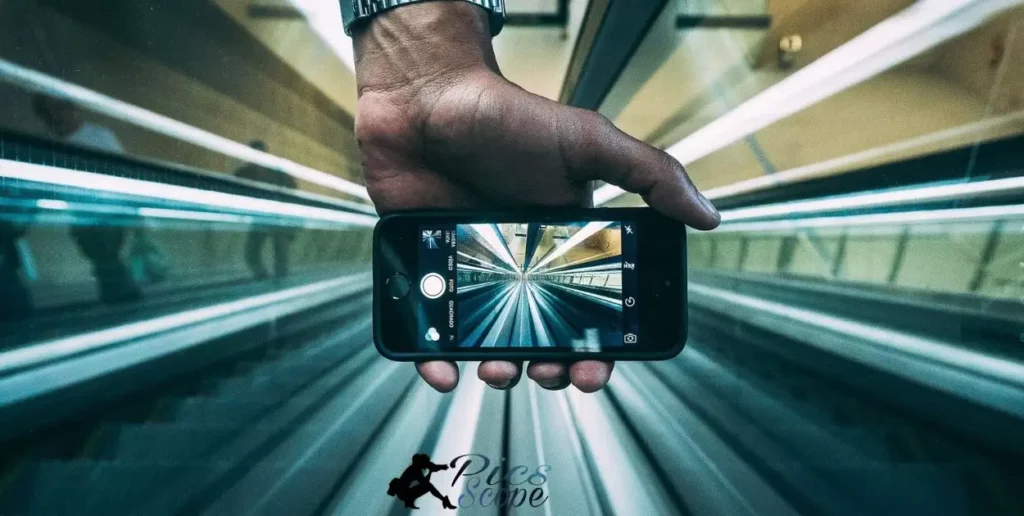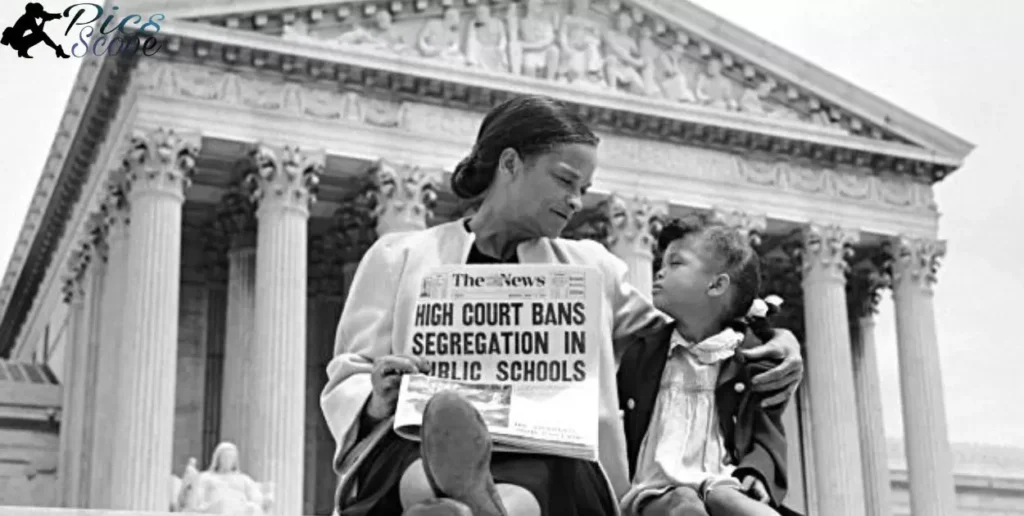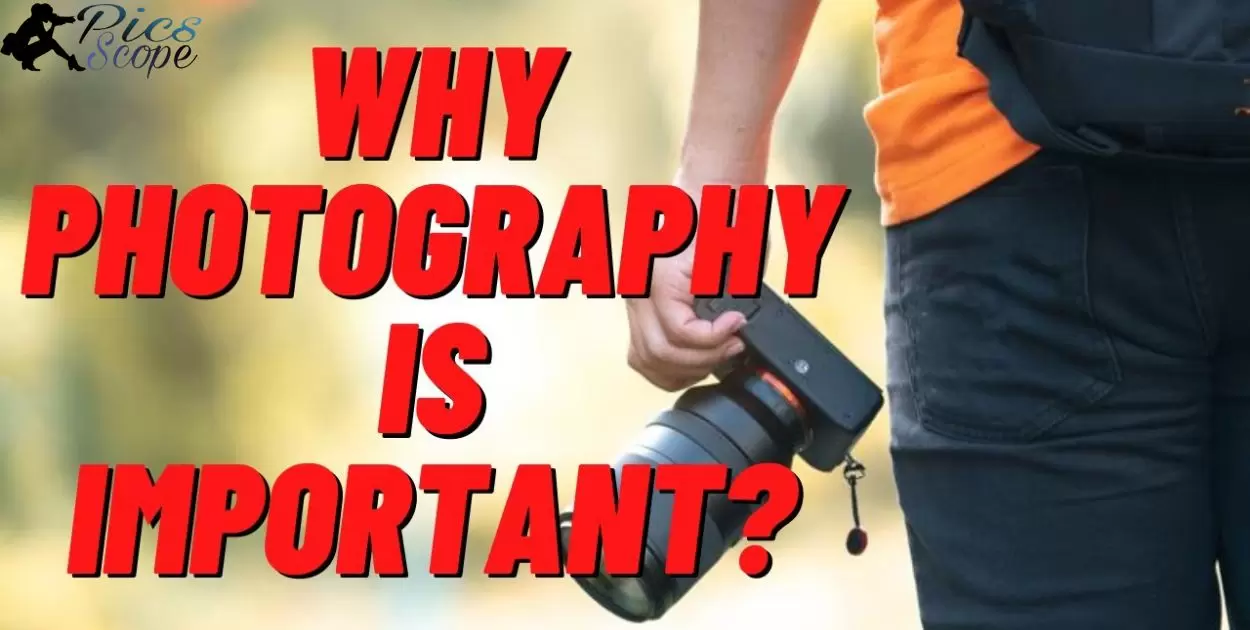Photography is important because it allows us to capture moments. Photography freezes time and lets us look back at memories. Pictures help us remember important events, people, and places from our lives.
Why Photography Is Important? Photography tells stories in a way words cannot. A single photograph can convey so much information and emotion. Images have the power to inform people and spread ideas. Pictures spread awareness about important issues happening around the world.
Photography is important for preserving history. Photos document how the world and society change over time. Through photographs, we learn about past eras and events we did not experience firsthand. Pictures help us understand our shared human experiences across generations and cultures. Photography plays a big role in education and research.
How does photography capture moments?
Photography allows us to freeze time. A moment that would otherwise pass by in a second can be captured forever with the click of a camera. Details like expressions and lighting that would normally fade from memory are preserved.
Photographs let us revisit special occasions even long after they occur. Happy times like birthdays, holidays, and vacations can be recalled and shared with others through pictures. Small snippets of daily life that might otherwise be forgotten are recorded for future reflection.
Why is preservation of memories through photography important?
Photographs help us commemorate important life events that we don’t want to forget. Photos from weddings, graduations, births, and other milestones allow us to relive those experiences years later and show others who could not be there. This helps keep cherished recollections alive across generations.
Preserving memories through images becomes even more meaningful after the loss of loved ones. Photos are a way to feel close to those who have passed and keep them present in our lives. They allow families to share stories and memories of people with future children who will never meet them directly.
What stories can photography tell?
Beyond capturing moments, photos can convey broader narratives and perspectives. A series of images can document change over time or tell the story of a trip, project, or period in someone’s life. Landscape and architectural photography reveals the personality and history of places.
Photography allows glimpses into different cultures and communities around the world. It shows glimpses of lifestyles, traditions, and environments unfamiliar to many. This helps expand understanding and appreciation of diverse human experiences. Photos can promote compassion by putting a human face on global issues.
How does photography convey information and emotion?

Beyond simply recording what is visible, photography is able to channel deeper meanings and feelings. A single powerful image may communicate more than words ever could about complex topics like suffering, injustice, joy, or humanity. Spatial relationships and use of lighting, color, and composition all shape emotional interpretation.
Subtle facial expressions and body language in photographs are universal forms of expression recognized across cultures. Photos allow viewers to empathize by seeing raw human emotions captured in a moment. Combining informative context with evocative imagery makes photography a persuasive medium for raising awareness.
How does photography spread awareness of important issues?
Photojournalism and documentary photography have long brought attention to social problems and sparked discussion of solutions. Images of poverty, pollution, war, and natural disasters help put human face on large-scale issues and motivate action. Non-profit groups effectively use photos to educate the public and rally support for causes.
By sharing personal stories of people impacted by challenges like disease, discrimination or environmental destruction, photography creates ambassadors for change. It moves observers from distant statistics to invested involvement. Photo campaigns spread awareness of humanitarian crises and mobilize needed international aid and reform efforts.
Does photography have the power to inform and influence people?
There is no doubt that impactful photographs have the power to inform people and influence opinion and policy. Iconic images exposing injustices like environmental degradation, war atrocities or human rights violations have educated global audiences and accelerated political and social progress.
Seeing raw human suffering or triumph stimulates emotion that simple text alone may not. Photographs provide objective evidence that is difficult to deny or forget. They have accelerated responses to immediate crises and also shaped long-term public perspectives on imbedded issues. The influence of photography grows as images are easily accessible worldwide through online sharing.
What role does photography play in documenting history?
Photography has become one of the most important methods of historical documentation. Since its invention, the camera has captured people, places and events as they occurred – providing an unprecedented firsthand visual record. Photos offer objective cultural artifacts that bring the past to life.
Historical photos transport viewers directly to another place and time in a way written descriptions alone cannot match. Beyond iconic portraits and news images, photography archives the appearance of fashion, architecture, transportation, technology and more to track social and material progress. Details captured serve as invaluable primary sources for historians and the public to study.
Photography helps preserve what may have otherwise been lost or forgotten as it immortalizes the past. It ensures depictions of history can be experienced by those who did not live through the documented eras themselves. Images root descendants in cultural understanding of where they came from.
How does photography help us learn about past eras?
Carefully cataloged and captioned historical photographs offer vivid glimpses into ways of life from earlier periods. Images reveal details about work, recreation, family life, transportation and cities that enhance understanding beyond facts and timelines. Seeing environments, clothing, daily tasks and pastimes come to life through photos aids conceptualization.
Photographs transport viewers to experience settings and events they cannot directly. Pictures from international archives allow global learning about diverse regional histories. Comparative analysis of photographs spanning decades illuminates cultural and technological evolution over long timeframes in interesting ways. Details provide learning opportunities about history in an engaging visual manner different from plain text.
How does photography aid in education and research?
Photography augments education by bringing lessons to life and offering primary sources for analysis and interpretation. Subjects across disciplines incorporate photographs, allowing visualization of concepts. Images aid memorization and bring inspiration to capture student interest. Documentary photographs let students experience history hands-on as primary witnesses.
Photography supports research across fields from science to anthropology to arts. Documentation of experiments, artifacts, landscapes and specimens aid discovery, analysis and communication of findings over time.
Historical photographs provide invaluable raw data to tackle new questions as technology enables enhanced analysis. Visual archiving frees future generations from need to directly observe certain rare phenomena. Overall, photography multiplies the value of education and research efforts for current and future benefit.
What impact has mobile photography had?

Ubiquitous camera phones have democratized image creation and sharing on a massive scale. Spontaneous snapshots of daily life, current events and personal perspectives are now easily captured and distributed worldwide through social networks in real-time.
Mobile photography changed expectations that any moment could become a shared public visual experience. It fueled new genres like street photography and citizen journalism as average people document occurrences they stumble upon. Images from eyewitnesses on the ground regularly bring attention to breaking news and humanitarian crises in remote regions.
The rise of photo-centric platforms like Snapchat and Instagram facilitated visual storytelling on a new intimate scale. Billions of photos pouring in daily reflect the evolving relationship people have with documenting and experiencing life through imagery. Mobile photography turned the global population into both chroniclers and historical witnesses of the current era’s visual record on a massive unprecedented scale.
How is photography being used professionally?
Photography is widely utilized in commercial and editorial applications. Professional photographers create promotional images for advertising, take pictures of new products for company websites, and photograph events for organizations. Skilled photographers also work as photojournalists providing images for magazines, newspapers and online publications.
Stock photography is a large industry that supplies images for general commercial use. Photographers produce shots of people, places and things that are added to stock image websites and libraries. Businesses license these photos for materials where they need visuals like websites, presentations and publications. Professional photography tools allow high quality work for even demanding digital formats.
Which genres of photography are most popular?
Landscape photography of scenic natural and urban settings remains one of the most beloved genres. Hobbyists enjoy capturing pleasing compositional shots while traveling. Portraiture is also widely practiced both professionally and casually. Candid lifestyle portraits document family and friends.
Wedding photography is a major commercial field due to the importance of preserving marriage memories. Events and performance photography satisfy a need to pictographically record concerts, conferences and ceremonial gatherings. Wildlife and nature photography allow exploration and appreciation of the non-human world.
How do amateur photographers share their photography?
Individual photographers share images through personal blogs, social media platforms and photo-sharing communities. Sites like Flickr, 500px and Instagram are popular to upload collections and get feedback from other members. Some amateurs gain followings and recognition this way. Blogs allow combining visuals with descriptive written stories.
Images can also be printed and shared physically. Many hobbyists enter local art exhibits and contests to showcase portfolios. Photography books compiled through self-publishing services let photographers archive their creative collections in permanent media. Some amateurs gradually develop paid opportunities through these showcasing activities.
What photography equipment is available?
Camera options range from affordable smartphones to high-end digital SLR systems. Entry-level DSLR kits include an interchangeable lens camera body and basic zoom lens. Additional lenses specialize in specific uses like landscapes, close-ups or portraits. Lighting gear like portable flashes and tripods ensure sharp handheld photos.
Other key gear includes cameras that combine high-zoom capabilities for wildlife photography. Astrophotography calls for specialized equipment to capture celestial phenomena. Underwater housings protect cameras and lenses during marine shooting. Drones extend photographers’ vantage points above the earth and landscape.
How is photography processed and edited?
The journey of a photograph does not end when the shutter clicks. Various processing and editing steps are often used to perfect images and prepare them for sharing or printing. The table below outlines some common techniques photographers use:
| Processing/Editing Step | Description |
| Raw File Conversion | Convert raw files from the camera into a usable format like JPEG using photo software. |
| Exposure Adjustments | Alter lightening and darkness of an image using tools like levels, curves, or brightness/contrast. |
| Colour Adjustments | Make colour corrections or modifications like changing hue, saturation, temperature. |
| Cropping | Zoom and trim an image to refine the composition. |
| Red-Eye Removal | Fix red eyes caused by camera flash using correction tools. |
| Sharpening | Improve clarity and details using filters like unsharp mask. |
| Noise Reduction | Minimize digital “noise” or graininess in images taken at high ISO speeds. |
What career opportunities exist in photography?

Paid career paths span commercial, editorial and artistic fields. Wedding, portrait and event photography serves a steady client base. Photojournalists work for major media outlets covering hard news. Fashion, product and architectural photographers create imagery for advertising industries.
Landscape artists sell exhibition prints and photography books. Medical and scientific applications employ clinical and microscope photographers. Museum and gallery curators oversee photographic collections. Instructors teach photography courses at colleges and workshops. Freelance opportunities abound for photographers open to varied assignments. Emerging fields like drone and smartphone photography also cultivate new livelihoods.
What is the future of photography?
Changing technologies will continuously transform equipment and techniques. High-resolution digital cameras paired with computational tools open new expressive potentials. Automation tools speed post-processing while maintaining artistic control. Integrated Why Photography Is Important artificial intelligence may suggest optimized camera settings or automatically generate edit presets
Extended and virtual reality technologies will merge photography with immersive digital experiences. Image capture will evolve from static frames to interactive light-field data allowing focus changes after shooting. Seamless image transfers between devices will improve mobile photography workflows.
Advanced nanoscale optics promise ultra-high definition photography exceeding the human eye. Quantum and holographic techniques may one day digitally reconstruct full 3D scenes from a single shot. Synthetic media capabilities will blend with traditional photography in groundbreaking hybrid forms.
At What Point Did a Majority of Lawmakers Support Change?
By the mid-1950s, many prominent lawmakers felt emboldened to take a stand against segregationist policies enforced under the guise of ‘separate but equal’. Landmark cases like Brown v. Board had weakened the legal logic defending Jim Crow laws. National polls showed public opinion gradually becoming more tolerant as civil rights leaders pushed their message peacefully.
However, entrenched opposition remained strong in Southern political power structures dependent on racism as social control. A major tipping point occurred with the Civil Rights Acts of 1957 and 1960 which enforced voting protections with bipartisan support. This signaled Jim Crow practices had lost legitimacy with most elected officials outside the Deep South despite continuing local resistance.
When Were the Last Jim Crow Laws Finally Repealed?
The Civil Rights Act of 1964 banned most remaining forms of legal discrimination in public accommodations, employment and facilities supported with public funds. This pivotal legislation ended de jure segregation nationwide. Some states delayed complying for several years while courts intervened.
Alabama did not remove the last provisions enforcing separate public facilities by sex from its state constitution until 2000. So while the 1964 Act rendered overt Jim Crow statutes officially null, lingering aspects took time to fully eliminate despite their illegality. The process of dismantling this oppressive legal framework and replacing it with inclusive equal protection spanned over a decade from initial national momentum building.
What Was the Effect of the Civil Rights Act of 1964?
Passage of the 1964 Act marked a major turning point with widespread and immediate impacts. Federally mandated desegregation and enforcement with teeth started to systematically undo discriminatory structures in employment, housing, education and public services across daily American life.
Areas like restaurants and hotels saw swift changes as bans on segregated dining took hold. School systems worked to dismantle defacto segregation lingering after Brown through programs hastening integration. Areas resisting compliance faced boycotts and lawsuits achieving further compliance.
Overall, the 1964 Act and its provisions fueled rapid progress derailing remaining legal enforcements of inequality after a century of government sanctioned racism. Its passage directly contributed to empowering the civil rights movement’s central goals with new momentum on a grand scale.
What Other Milestones Signaled the End of Legal Segregation?
The 1964 Act banning de jure segregation set the stage for further change. The 1965 Voting Rights Act removed obstacles denying African Americans their right to vote, empowering political participation. The 1968 Fair Housing Act prohibited racial discrimination in housing opportunities.
Court orders desegregating higher education amid protests accelerated integration. By the late 1960s, the Civil Rights Movement had forced open access to public facilities through determined non-violent direct actions. Icons like Martin Luther King promoted a vision of diversity, justice and reconciliation increasingly embraced nationwide through grassroots mobilization.
These cumulative successes eroded regional resistance and shifted societal momentum decisively past the era of government sanctioned white supremacy. Gains outpaced remaining reactionary holdouts toppling the Jim Crow system in law and custom within a few pivotal years. Nonviolence overcame violence through moral force and political pragmatism.
How Rapidly Did Existing Segregation Laws Get Removed?

Despite lingering resistance, the transition away from codified racial inequality happened remarkably fast considering the entrenched nature of the Jim Crow system and centuries of rooted social inequities. Within a span of 15 years, major civil rights reforms outlawed the oppressive laws, policies, and state constitutions formalizing segregation. Why Photography Is Important in capturing this transformative history.
Removal picked up speed as national sentiment embraced inclusive protections. The Civil Rights Act of 1964 banned discrimination nationwide and opened the floodgates for changes. By 1968, most public facilities had integrated compliance and anti-discrimination statutes were replacing the old Jim Crow legal structure across statutes books from courthouses to capitols.
While informal bias and disparities persisted culturally, the dismantling of de jure policies happened with unprecedented swiftness due to courageous civil disobedience and effective governance response in Washington. This showed how rapidly institutional racism can fall when challenged by moral vision and political will.
In What Ways Have Legacy Issues of Jim Crow Persisted?
Though Jim Crow laws were abolished, their generational effects on communities of color and American society remain ongoing issues. Racial disparities in areas like wealth, health, education and the criminal justice system reflect a continuity of systemic bias with roots in the segregation era.
Spatial segregation in housing and public education also persist long after desegregation due to economic inequalities and social dynamics. Lingering emotional and psychological trauma from state-sanctioned racism impacts descendant populations. Monuments glorifying the Confederacy further highlight America’s unfinished reckoning with this legacy. Overt and covert white supremacist movements still evoke Jim Crow nostalgia.
While strides dismantled the laws of racial apartheid, overcoming deep-rooted societal inequities planted under centuries of white supremacy demands sustained efforts. The impacts of government oppression remain an inheritance shaping communities of color today.
FAQ’s
What makes photography so powerful?
Photography has the unique ability to capture raw emotion and document history in a way that words alone cannot.
How does photography help preserve history?
Photographs provide visual primary sources that allow future generations to learn about past societies and events in a vivid, engaging way.
Why is photography crucial for education?
Photos enhance learning by bringing concepts to life through imagery and allow distant historical eras to be studied directly through archived images.
How can amateur photographers share their work?
With photo editing apps and social media platforms, hobbyist photographers can make their creative works accessible to wider online audiences for enjoyment and discussion.
What career paths exist involving photography?
Beyond professional photography roles like photojournalism and commercial work, those skilled with cameras can also work in careers that leverage photography for teaching, research, archiving, design and more.
Conclusion
Why Photography Is Important: Photography plays an invaluable role both personally and socially. It allows us to preserve precious memories that would otherwise fade with time. Beyond the personal, photography documents history, spreads awareness of important issues, and aids in all areas of education and research
Images have a unique power to influence thought and connect humanity across borders in a way that words alone often cannot. As technology evolves, photography will remain an essential part of how we record and share our lives. It brings history to life, sparks important discussions, and builds empathy between communities.
Whether enjoyed casually or pursued professionally, photography continues to strengthen family bonds, educate future generations, and make a positive impact on global issues. In the digital age, the profound importance of this art form will surely be felt for many years to come.







